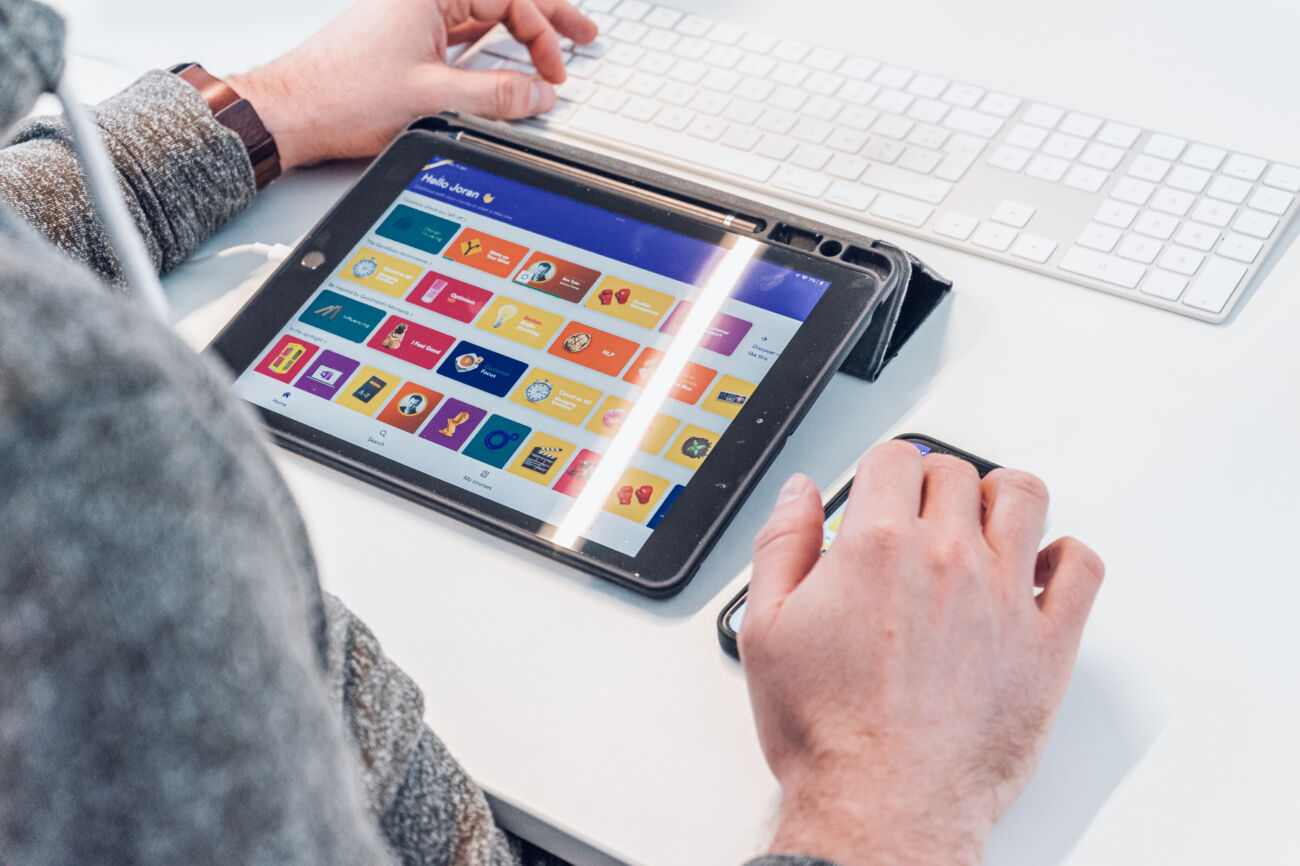Most design choices are still made based on assumptions. But to answer to your audience's needs, you want to test and validate your designs, so it is highly recommended to test them with your target group. Through user tests, you can let your target group interact with (a prototype of) your designs. Each user test provides new insights and can further optimize your product to achieve the intended goals.
Every product is different, and thus every user test is different. Nevertheless, there are 5 essential steps to keep in mind to ensure valuable tests and results.
1. A good preparation is half the work
To conduct a user test, you need an interactive prototype. The participants must be able to interact with your product. Depending on your product's development stage, this can be a live version, a clickable prototype (Figma, Axure, Adobe XD), or even a paper prototype where you manually swap your screens after every action of the participant.
Define in detail what the purpose of the product is and for whom it is intended. This scope can help you build test scenarios and find the right participants. Look for at least 5 participants that match your predefined description. If there is room to vary within this description, that's a good thing. For example, if the target audience is between 18 and 60, try to appeal to older and younger participants.
Prepare your questions in a way that always gives the participant (moderated) freedom to interact with the product. For example: if you want to subject Spotify's mobile app to a user test, don’t give your participants detailed commands (such as "enter your email address, choose a password, click...") but describe scenarios in which the participant can empathize like “you want to put on your favorite song. Use the Spotify app for this”.
Validate your test with a pilot test. Find an additional participant to take the test with you. This may provide new insights and give you an idea of the timing. Based on these insights, you can further fine-tune the test before moving on to the actual tests. The pilot test results do not count towards the final results (unless the test remained unchanged).
2. Test your test
Don't rush into things, but welcome the participant in a light-hearted way and create a relaxed atmosphere. Emphasize that you are not testing their knowledge or skills but make clear that you are looking for working points in your designs and interactions. This means that there are no wrong answers or opinions. Every opinion is of great importance. Ask the participant to think out loud as much as possible. This allows you to sympathize with the thought processes of your target audience.
Briefly explain the design of the test and how long it will take. Ask permission if you plan to record the session.
Start your test with some general questions independent of the platform you’ll be testing. These can be questions about, for example, browsing habits, past experiences with similar products, personal situations, etc. Then proceed to the test scenarios with your interactive prototype.
Make sure you ask each participant your question or assignment in the same way. This way, you will give everyone the same information, and your results will be representative.
Do not hesitate to ask questions when a participant makes an interesting remark or asks questions. Dare to remain silent at difficult moments. In this way, you will see how the participant improvises when in doubt.
Conclude the test with reflective questions about the general experience of the product and ask additionally for personal wishes or recommendations.
3. Analyze and present possible solutions
While taking the test, it is helpful to have someone taking minutes to support you and group all relevant input by participant and topic. We use the well-known rainbow sheet template; this is a handy tool for keeping a structured record of all the answers and observations. Afterward, you can analyze the results together. Try to estimate the priorities by always keeping the goal of the product in mind. Then, together with your team, think of possible solutions for the proposed working points.
4. Adjust your initial designs
Take the findings and possible solutions from your user tests to the responsible design team. Try to visualize the possible solutions. You start by making several high-level sketches and brainstorming about the ideal design. Then you can convert these into wireframes or finished designs.
5. Validate your improvements
To validate your new designs, it is recommended to perform new user tests. You can use the same scenarios and questions but work with other participants. If the problems from the first user tests no longer or less often occur, you can be sure that you improved your design. These new user tests may expose new problems, so you can keep optimizing until you and your target audience are satisfied with the result.
Based on these five steps, you can use user testing to improve your product further. Within each step, there are different methods and approaches possible, depending on your project and test objective. Good preparation helps, but remember that your test group is unpredictable, and you can deviate from your plan to go deeper into certain topics and gather substantiated qualitative results.

